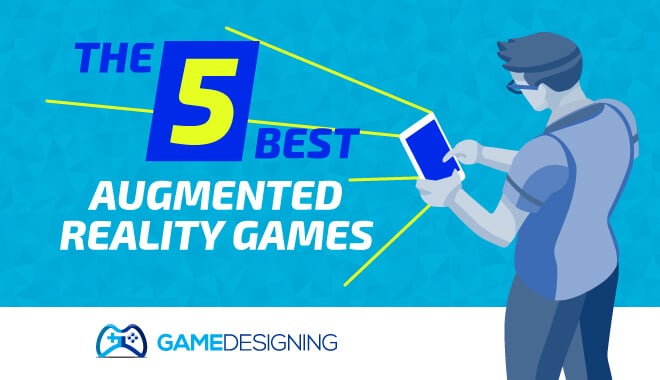Way back in the summer of 2016, gamers of all ages were treated to the world-changing event that was the release of Niantic’s Pokémon GO.
We all woke up that morning in July hearing of a new Pokémon game, but what followed was an insanely creative and lasting experience that could be shared with everyone, everywhere.
Using augmented reality, or AR, Pokémon that we all know, and love would be viewed through our phone’s camera.
This meant that the Pokémon could appear seamlessly in our world: Pikachu in the grocery store, Charmander in the park, and Bulbasaur in Times Square.

How was this cool new technology possible? Niantic tapped into something revolutionary for a new, extremely wide audience. By harnessing augmented reality, they brought anyone with a smartphone to partake in the game.
I recall a truly unreal experience as I entered a local park in my hometown. Joined by my sister, we walked around the expansive meadows and tree-lined paths.
As we came up to a pavilion near the center of the park, we stopped dead in our tracks. Like some sort of gang tag, ‘TEAM VALOR’, (one of the three ‘teams’ users could join in-game), was etched into the asphalt with chalk.
The impact that augmented reality had upon our reality, I now knew, was in full swing.
What Is Augmented Reality?
Consider augmented reality virtual reality’s little brother. It is a halfway point between the real world and virtual environments. In augmented reality simulations, the real world is infused with virtual objects, (like Pokémon), and provides an interactive experience.
It can also be known as ‘mixed reality’, as it does just that; it mixes the computer-generated world with our reality.

While virtual reality goggles allow us to tap into a completely different interface, we can be transported to far off lands, technological constructs, and situations straight out of movies and dreams.
I like to think of augmented reality as serving as a land bridge between the two technologies.
The potential for augmented reality is easier than ever in this day and age. With merely smartphones or tablets within our reach, we can be intimately introduced to the concept of augmented reality.
Google began to dabble in augmented reality with its ambitious Google Glass—a pair of glasses that includes a detailed HUD, (heads-up display), resembling a hands-free smartphone.
Google Glass has several beneficial features not only for comfort and leisure but also practical and helpful ways to utilize it.
In many augmented reality experiences, the user’s GPS is used to create a more realistic approach to gaming, allowing for the seamless transition between real-world environments and technological ones.
It is plain to see that augmented reality has brought us leaps and bounds technologically to places where we haven’t been before. That is fine, but what about the most important thing for us all? I am of course talking about GAMES, – specifically, AR games.
Our Ranking Criteria
In addition to player and critic ratings, we use objective metrics like sales, users, and sales growth rate to make our lists (read more). Some of these data sources include:
The Best Augmented Reality Games
Pokémon GO was not the first, and definitely won’t be the last augmented reality game. What others are there?
What is on the horizon for AR?
Well, here is the list of the 5 best AR games—specially tailored to 2023.
Pokémon GO
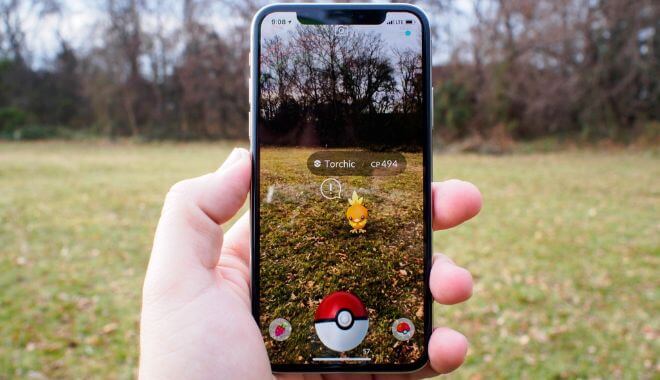
Niantic, Inc. | 2016 | Free
Yeah, I just waxed poetic about Pokémon GO, but I swear, it’s one of the best! San Francisco-based company Niantic, in partnership with Nintendo, developed the beloved augmented reality game Pokémon GO, and the rest is history.
The reason it is more relevant than ever is Niantic and Nintendo’s potential to keep improving the game.
The world of Pokémon is extremely detailed: it includes over 800 unique Pokémon, opening the doors of possibilities for the companies to further hone their successful, (need I emphasize), free app.
They are constantly updating, too. At first, it was simply finding low-level Pokémon around your neighborhood, with cities and major hubs of civilization being the most desirable areas to capture rare Pokémon.
This was the game that Pokémon fans worldwide were waiting for: a game to catch Pokémon and use them to battle at certain hotspots in the real world, (usually landmarks or other places with heavy foot traffic), labeled as gyms, to exert dominance on other users.
I took a trip to New York City a month after release, and the sheer amount of valuable Pokémon available in even the most innocuous of neighborhoods was enough for me to want to never leave the city.
Of course, the game is not without its controversy. Many people weren’t responsible when playing, sometimes playing the game behind the wheel of vehicles, putting countless people in danger.
It brought ‘texting while driving’ to a whole new level. Some people were even mugged at certain spots: the criminals would put down a lure and wait for eager players to arrive, hoping to capture Pokémon, only to be met with ruffians and ne’er do wells who had to ruin the fun for others.
Along with this addictive gameplay, Niantic has been consistently updating their popular game. Not only that but as of February 2019, the game surpassed a staggering 1 billion downloads.
It is clear that the popularity has not waned one bit for Pokémon GO, making it, I believe, one of the contenders for best AR games this year and dare I say, all the time.
Difficulty
Its various features, such as Gym battles and Raid Bosses, can present challenges that require strategy and cooperation, especially for higher-tier encounters. The game balances casual gameplay with elements that can be complex for those seeking a more competitive experience.
In-Game Purchases
- In-Game Currency Packs: Purchase packs of in-game currency at different price points for various in-game transactions and items.
- Event Access: Obtain tickets or bonuses for access to special in-game events or content during limited-time promotions.
Ingress
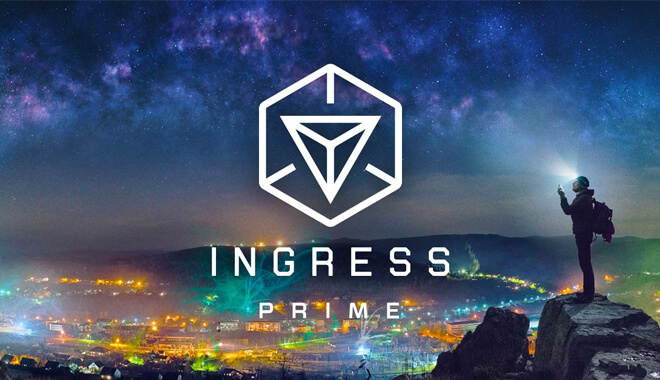
Niantic, Inc. | 2012 | Free
Surprise, surprise, Niantic appears twice on the list. In the augmented reality game, Ingress was released about two years before Niantic’s Pokémon GO.
In the game, the player uses their GPS on their phone to interact with ‘portals’, usually coinciding with landmarks, much like the later Pokémon GO. The setting of the game is a nifty mix of sci-fi and cyberpunk in which Earth has come in contact with an alien force.
Subsequently, two factions emerge one favoring the use of alien technology, and those who oppose it outright, wanting to keep humanity intact, (called the Enlightened and the Resistance, respectively).
Augmented reality comes in when players interact with the ‘portals’, earning experience points and action points.
For example, you can go to the local pub, doubling as an in-game portal, and earn experience points that way, possibly winning the location for whichever side the gamer chooses to side with.
Ingress also had the unique experience of being involved with academia, specifically being studied as a connection with globalism and sharing cultural significant sites. It allows the players to connect, especially with the emphasis on teamwork that the game requires.
Strangers can easily come together and share stories, neighborhoods, and cultures in which may have never taken place if not for a game like this.
It is easy to see that Ingress served as a sort of inspiration for what would eventually come in 2016. The ‘turf war’ aspect of the two sides, competing for control of areas, it all ties into what Niantic would later develop in their most popular title.
That’s precisely why it ranks very high on the list. Not only significance, but because it is still immensely popular with some, and has many of the well-honed features that we are now so intimately acquainted with.
Difficulty
“Ingress” presents a moderate learning curve for newcomers, requiring players to physically travel to various locations to interact with portals. The strategic element of aligning with factions and collaborating with other players adds depth, making mastery of the game both challenging and rewarding.
In-Game Purchases
- Monthly Subscription: Subscribe to a monthly plan for ongoing benefits and rewards during your gameplay.
- In-Game Currency Packs: Purchase packs of in-game currency at different price points for various in-game transactions and items.
Zombies, Run!
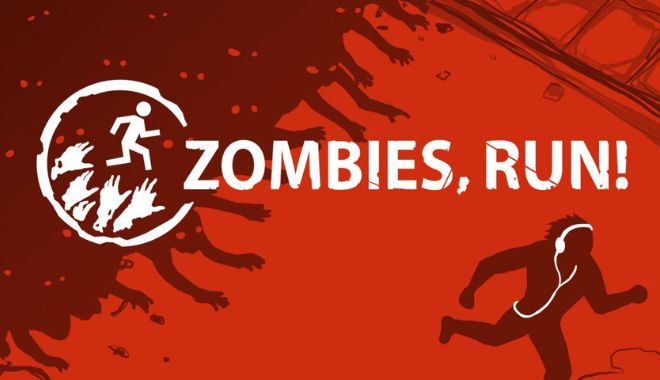
Six to Start | 2012 | Free
Zombies, Run! was released in 2012 by British game developers Six to Start. This augmented reality game is very story-driven, having the player listen to stories about a zombie outbreak, as well as having the players become proactive members.
Players will have to do what we now know is expected of us in a dreaded zombie outbreak: collecting valuable items for survival, helping others, and of course, running from the zombies.
The main crux of this game is the literal running. Although it includes all of the important resource-gathering elements, its primary focus is the actual physical activity of the user.
It became an extremely popular health and fitness app. The interesting story, which includes audio logs, propels the runner into becoming more engaged with their physical health. What is better than that? A game that is not only interesting but keeps you in good shape.
Something that sets this game apart from Niantic’s games is that the game is completely hands-free. Since it is based on physical exertion, the game is primarily made to be played while the player is occupied by running.
They can even take part in the famous ‘zombie run’ in which they need to kick their running into high gear so as not to lose precious supplies that they have picked up during their exercise.
Along with all of this, the supplies the runner picks up during their exercise session will, in turn, benefit the town, Abel township. The game then transitions to a city builder like a strategy game in which you can improve buildings and defenses.
And, as expected, the better the player does in terms of exercise, the more beneficial the town and its bonuses become, creating a nice cycle of positive health as well as addictive gameplay.
My brother-in-law played this extensively during the summer when he was unemployed. He had recently recovered from a hairline fracture that left him homebound. Determined not to become a couch potato, he ran at our local park, which wrapped around a lake for 5 miles.
Every day, he would run from zombies for those 5 miles. He told me how terrifying and high stakes the game turned into.
I’m not sure if he was too interested in the story aspects, but he said the town building was addictive and honestly made him run harder and push himself past his comfort zone.
These aspects of positivity are just one positive aspect of augmented reality games and the bright future they have in our society.
Difficulty
The game is designed to be accessible to all fitness levels, with adjustable difficulty settings, it provides an engaging challenge by integrating zombie chases, requiring players to increase their pace to evade the undead.
In-Game Purchases
- Premium Content Access: Unlock additional content, features, or benefits within the game with these in-game purchases.
- VIP Membership: Subscribe to a VIP Membership for exclusive perks, content, or bonuses during your gameplay.
Harry Potter: Wizards Unite
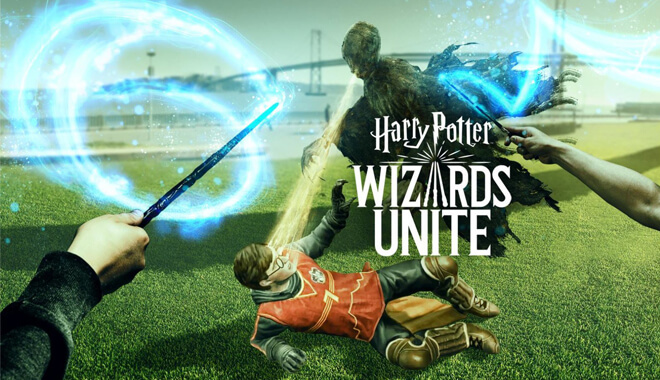
Niantic, Inc. | 2019 | Free
So technically, this has not been released yet. It is slated for a quarter 2 2019 release, (which puts it in the zone of about April, May, or June.
It has already been out for beta testing in Australia in April, and that could go on for a bit. I expect it to be fully released by Summer 2019 at the latest.
As you can surmise, J.K. Rowling’s beloved world of wizards and muggles comes to life in this augmented reality game. The premise is simple: the player takes on the role of a wizard who must battle beasts through the use of their GPS and cell phone.
And another surprise, Niantic is publishing this title. They are also working alongside Warner Brothers Games to develop. It truly seems that Niantic is one of the pioneers in popular augmented reality games, and I am all for it.
In the game, the player chooses all their favorite aspects of the Harry Potter wizarding world, namely choosing all of the customizable elements. Want a cool wand? Which house do you want to be part of?
You can choose any of these things to your liking, much like Pokémon GO. Surely there will be numerous comparisons to the Pokémon title, as that is where Niantic came into its own in terms of development. But if it isn’t broken, don’t fix it!
After you decide which specific wand and wizarding house to align with, and your specific class, (in the guise of creative titles like Professor, Auror or Magizoologist), you will travel around and battle mythological beasts like the basilisk and trolls from the Harry Potter books, films, and franchise.
It has been a while since I delved deep into Harry Potter, so I’m excited about this title. With a big company like Warner Brothers and Niantic at the helm, there is no way it WON’T be a quality title.
Difficulty
“Harry Potter: Wizards Unite” offers a multi-layered gameplay experience that can be initially overwhelming for newcomers due to its array of features and mechanics.
Game | Year | Studio | Rating |
Pokémon GO | 2016 | Niantic, Inc. | |
Ingress | 2012 | Niantic, Inc. | |
Zombies, Run! | 2012 | Six to Start | |
Harry Potter: Wizards Unite | 2019 | Niantic, Inc. | |
Spirit Camera | 2012 | Tecmo Koei | |
Jurassic World Alive | 2018 | Jam City, Inc. | |
The Walking Dead: Our World | 2018 | Next Games | |
Angry Birds AR: Isle of Pigs | 2019 | Rovio Entertainment | |
Ghosts ‘n Guns | 2017 | Turbo Chilli Pty Ltd | |
BBC Civilisations AR | 2020 | BBC Media | |
Five Nights at Freddy’s AR | 2019 | Illumix, Inc. |
Spirit Camera
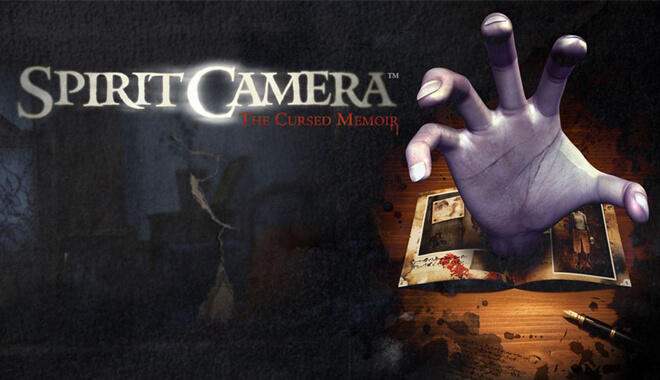
Tecmo Koei | 2012 | $33
Make sure you are playing in broad daylight with this next title. Evoking imagery and fond memories of the terrifying Fatal Frame series of horror games, Spirit Camera have you thrust into the position of a character wielding a camera, (the Camera Obscura), that defeats ghosts.
For the Nintendo 3DS, Spirit Camera is a handheld Fatal Frame title, released in 2012.
I love this idea, as the eerie apparitions appear in our world, and you must eradicate them. If you were already freaked out by ghosts, this will NOT help you get over your fear.
Instead, it populates your area with them. However, I believe this was the revolutionary step that the Fatal Frame series needed. As fun as they were, where could they go from where they stopped? By entering the real world, the possibilities became so much more potent and endless.
The Fatal Frame franchise had me on the edge of my seat all of the time. I could never relax. Now it is kind of a blessing and a curse to bring the terrifying features into my world.
Where the ghosts ‘lived’ in my Play Station, to be destroyed either by the Camera Obscura or me turning the system off, I can now find ghosts in my dang basement.
The game is super plot-driven, which I love. I mean I love Pokémon GO, but there is no story there. In Spirit Camera, you are thrown into a spooky Fatal Frame iconic story including an old Japanese haunted house.
Along with the plot, the game works in full 3D: this means that ghosts will appear behind you, working in 360 degrees and making the player aware of every bit of their surroundings.
The game is split into three different game modes: story, minigames, and challenges. The story mode is where most of the ‘meat’ of the gameplay lies, especially the augmented reality features of the game.
Like I said, keep the lights on for this title!
Difficulty
The game’s reliance on specific AR and gyroscope conditions, such as needing well-lit areas and ample space, can make it inconvenient and challenging to play in various settings.
Jurassic World Alive
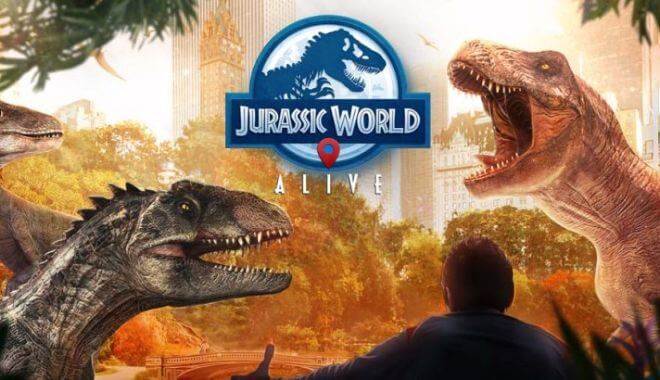
Jam City, Inc. | 2018 | Free
“Jurassic World Alive” is an Augmented Reality (AR) mobile game that was released to coincide with the 2018 Jurassic World movie. Developed by Ludia and co-published by NBCUniversal, the game plunges players into a world where they can collect, evolve, and engage dinosaurs in strategic turn-based battles.
Drawing elements from the movie, such as the concept of collecting dinosaur DNA, the game stands distinct with its innovative features. While it pays homage to the cinematic universe of Jurassic Park, “Jurassic World Alive” offers a fresh and immersive gaming experience, making it a standout title in the AR gaming genre.
In terms of gameplay, “Jurassic World Alive” is not just about collecting dinosaurs. Players prepare their teams, evolve their dinosaurs, and then dive into the action-packed combat. The battles are waged in a 1vs1 manner within a ” best of 3″ environment, where players can swap out dinosaurs, each having unique abilities and attack effects.
Outside of combat, players engage in collecting genes for specific dinosaurs, with stages like the Hunting stage where they shoot darts to collect dinosaur DNA, reminiscent of scenes from the movies.
What Makes It Great
Innovative Augmented Reality (AR) Experience: Unlike many movie tie-in games, “Jurassic World Alive” offers a unique AR experience, allowing players to collect and interact with dinosaurs in the real world through their mobile devices.
Strategic Gameplay: Beyond just collecting dinosaurs, the game offers a deep turn-based combat system. Players can evolve their dinosaurs, prepare their teams, and engage in 1vs1 battles, making strategic decisions based on each dinosaur’s unique abilities.
Broad Accessibility and Replayability: The game is designed for a wide audience, from casual players to hardcore gamers. With its high accessibility, varied gameplay modes, and connection to the beloved Jurassic Park franchise, it offers a lot of content and replay value.
Difficulty
The turn-based combat system adds depth, challenging players to think tactically in 1v1 battles. While the game incorporates AR elements similar to Pokémon Go, it also offers diverse gameplay modes, making it both engaging and moderately challenging for players.
In-Game Purchases
- Monthly Subscription – Offers various benefits and rewards for subscribers.
- In-Game Item – Players can acquire various in-game items, which include items to enhance gameplay or cosmetic items.
The Walking Dead: Our World
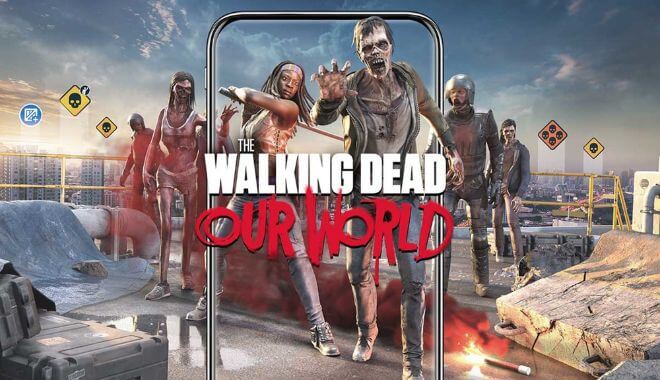
Next Games | 2018 | Free
“The Walking Dead: Our World” offers players a unique blend of real-world interaction and virtual zombie combat. This game allows players to immerse themselves in the world of The Walking Dead, right from their everyday surroundings.
Whether you’re at home or in a city park, you can launch the game, and suddenly, zombies appear in your real-life environment. Players can team up with friends or even strangers in the game to tackle these undead foes. The gameplay emphasizes strategy; every bullet counts, and the mode of attack is crucial.
Players can also embark on missions to rescue survivors, earning extra points and even constructing shelters for the uninfected, adding another layer of depth to the game.
The graphics are notably impressive, making the zombies and the environment appear incredibly lifelike. While the game’s primary focus is on combat, strategy plays a significant role. Players must carefully choose their mode of attack, as resources like bullets are limited.
Additionally, the game introduces building elements, allowing players to create shelters for survivors, further enhancing the gameplay’s depth. The game is easy to dive into, with players simply pointing their cameras to the ground to engage with zombies.
Overall, “The Walking Dead: Our World” offers an engaging mix of AR gaming and strategic combat, making it a must-try for fans of the series and newcomers alike.
What Makes It Great
Real-World Integration: The game seamlessly blends the virtual world of zombies with the player’s real-life surroundings, offering a unique and immersive AR gaming experience.
Collaborative Gameplay: Players can team up with friends or even strangers within the game to combat zombies, emphasizing the importance of teamwork and strategy in surviving the apocalypse.
Diverse Challenges and Missions: Beyond just combating zombies, players can embark on missions to rescue survivors, construct shelters for the uninfected, and strategize to use their resources effectively, adding depth to the gameplay.
Difficulty
The game emphasizes strategy; every bullet counts, and players must choose their mode of attack wisely. Additionally, missions involve rescuing survivors, which rewards players with extra points, and there’s an innovative feature allowing players to construct shelters for the uninfected.
With impressive graphics that make the undead appear lifelike in real-world settings, players must be vigilant and strategic to survive in this game.
In-Game Purchases
- In-Game Currency – in-game currency with real money for buying various items and upgrades.
Angry Birds AR: Isle of Pigs

Rovio Entertainment | 2019 | Free (Mobile)
“Angry Birds AR: Isle of Pigs” marks a significant evolution for the iconic Angry Birds franchise, bringing the game into augmented reality. Developed by Resolution Games and published by Rovio, this iteration allows players to experience the game’s 40 levels superimposed onto their real-world surroundings.
Whether it’s your kitchen floor or a city park, players can physically move around the structures, identifying weak points and hidden items, adding a layer of strategy and immersion not seen in previous versions.
The game retains the classic Angry Birds mechanics, where players launch birds with unique abilities from a slingshot to topple structures and defeat the mischievous pigs. However, the transition to AR means players now navigate in three dimensions, making trajectory prediction and shot placement even more crucial.
The game’s AR technology is lauded for its stability and realism, with only minor hiccups in gameplay. As the review suggests, “Angry Birds AR” not only rejuvenates the franchise but also stands as one of the most impressive showcases of augmented reality in gaming to date.
What Makes It Great
Augmented Reality Integration: The game seamlessly superimposes its 40 levels onto real-world surroundings, allowing players to physically move around and interact with the game environment, adding a new layer of immersion and strategy.
Engaging Gameplay: Retaining the classic Angry Birds mechanics, the game challenges players to think in three dimensions. The AR functionality allows players to identify weak points, and hidden items, and strategize their shots more effectively.
Stable AR Technology: The game’s AR tech is notably stable, with levels appearing grounded in real-world surroundings. This solid illusion enhances the overall gaming experience, making the virtual and real-world blend almost seamlessly.
Difficulty
While the game retains the familiar mechanics of launching birds to topple structures and defeat pigs, the AR dimension adds depth, requiring players to think spatially and consider angles and trajectories in three dimensions. The game strikes a balance between challenge and engagement.
In-Game Purchases
- Advertisement Removal – Remove ads for a one-time purchase or with a subscription fee.
Ghosts ‘n Guns
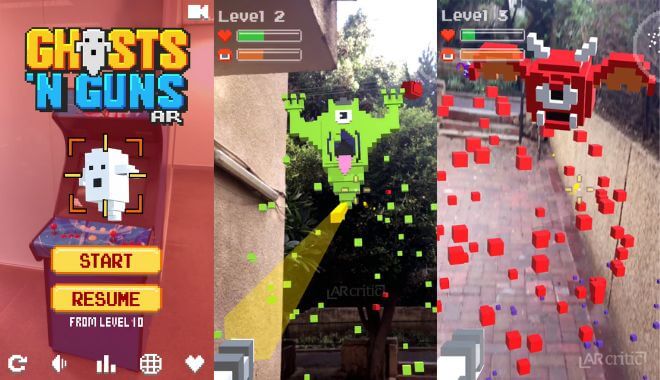
Turbo Chilli Pty Ltd | 2017 | Free
Ghosts ‘n Guns” is an ARKit arcade game for iOS that thrusts players into a vibrant pixel-art world where they fend off hordes of invading pixel ghosts. Developed specifically for augmented reality, the game is played from a first-person perspective, challenging players to eliminate these spectral invaders that appear in their real-world surroundings.
The game stands out with its one-touch controls, allowing players to shoot continuously, a feature that proves essential given the unpredictable movement of the ghosts and the sheer number of enemies that spawn.
The game’s design is reminiscent of classic arcade shooters, but it’s the boss fights that truly elevate the experience. These encounters are not only visually entertaining, with their quirky pixel-art designs, but also offer a balanced and challenging gameplay experience.
The retro-style visuals and soundtrack evoke a sense of nostalgia, transporting players back to the golden age of arcade gaming. Coupled with modern AR technology, “Ghosts ‘n Guns” offers a delightful blend of old-school charm and cutting-edge gameplay, making it a must-play for both arcade enthusiasts and new gamers alike.
What Makes It Great
One-Touch Controls: The game features intuitive one-touch controls, enabling players to shoot continuously. This design choice enhances the gameplay experience, especially given the unpredictable movement of the ghosts and the volume of enemies that appear.
Challenging Boss Fights: Beyond the standard enemies, the game introduces boss fights that are both visually entertaining and challenging. These encounters add depth to the gameplay and provide players with a rewarding experience upon completion.
Retro Pixel-Art Design: The game’s pixel-art visuals and soundtrack evoke a sense of nostalgia, reminiscent of classic arcade games. This design choice, combined with modern AR technology, offers players a unique blend of old-school charm and contemporary gameplay.
Difficulty
The game boasts charming pixel-art visuals reminiscent of classic arcade games, and its standout features are the challenging boss fights. These encounters are not only visually entertaining but also offer a balanced gameplay experience, demanding players to strategize and adapt to the erratic movements of the bosses and their accompanying fighters.
In-Game Purchases
- Premium Upgrade – Purchase the Premium Upgrade to enhance your gaming experience with additional features and benefits.
BBC Civilisations AR

BBC Media Applications Technologies Limited | 2020 | Free
“Civilisations AR” is a groundbreaking augmented reality app developed in conjunction with the BBC Two series “Civilisations.” Presented by Simon Schama, Mary Beard, and David Olusoga, the series spans 31 countries and covers over 5,000 works of art throughout human history.
The app, a collaboration between BBC Arts, BBC R&D, Nexus Studios, and around 30 museums and galleries across the UK, allows users to bring the treasures of these collections into their own homes. By overlaying virtual objects onto the real world, users can explore and interact with over 40 meticulously scanned artefacts from various museums and galleries.
The app’s creation was driven by the desire to make art and culture more accessible to everyone, regardless of their location. Whether it’s a hidden gem in a remote museum or a renowned masterpiece in a major city, “Civilisations AR” brings these artefacts to life in the user’s environment.
Beyond just viewing, the app encourages users to delve deeper into the history and significance of each artefact, fostering a deeper connection to the art and the BBC Two series. The app stands as a testament to the potential of AR technology in revolutionizing the way we interact with and appreciate art and history.
What Makes It Great
Diverse Collection: The app showcases a curated selection from over 280 artefacts submitted by more than 50 museums and galleries. This vast range ensures users are exposed to a rich tapestry of human history and art from various cultures and time periods.
Real-World Contextualization: Unlike traditional museum visits, the app allows users to place artefacts in their own environment, be it their living room, garden, or classroom. This juxtaposition of ancient artefacts in contemporary settings can lead to new perspectives and interpretations.
Interactive Learning: The AR experience is not passive. Users can move around the artefacts, view them from different angles, and get up-close details, promoting a more interactive and hands-on approach to learning.
Difficulty
There might be challenges in understanding the historical context and significance of each artefact. The experience is designed to be accessible and informative for users of all backgrounds and ages.
Five Nights at Freddy’s AR

Illumix, Inc. | 2019 | Free
“Five Nights at Freddy’s AR: Special Delivery” (FNaFAR:SD) revitalizes the renowned horror game franchise by introducing augmented reality (AR) into its gameplay. In this iteration, players are thrust into a world where Fazbear Funtime Services delivers animatronics right to their doorstep.
However, these animatronics are far from benign. With glowing eyes, they lurk in players’ real-world surroundings, ready to strike unless players zap them first. As players disable these menacing machines, they collect parts, allowing them to craft their own animatronic creations and send them to terrorize other players.
The game’s AR mechanics are straightforward yet engaging. Players use their device’s camera to scan their environment, and when static appears, it signals an animatronic’s proximity. The objective is to locate and zap these creatures before they attack.
Beyond the thrill of the chase, the game offers a mischievous twist: players can design their own animatronics and unleash them on others, hoping to give them a genuine scare.
While “Five Nights at Freddy’s AR: Special Delivery” doesn’t delve deep into a coherent storyline, it doesn’t need to. Its strength lies in its fun, campy, and eerie gameplay, making it an enjoyable experience for both longtime fans of the series and newcomers.
What Makes It Great
Personalized Horror Experience: The game’s AR feature transforms familiar surroundings into a horror playground, making the scares more intimate and personal. This close-to-home experience amplifies the game’s tension and fear factor.
Community Interaction: The ability to send out custom-designed animatronics to other players fosters a sense of community interaction. This feature not only adds a competitive edge but also encourages players to get creative in their designs to out-scare their peers.
Evolving Gameplay: While the game retains the core essence of the Five Nights at Freddy’s series, the introduction of AR and the ability to create and send out animatronics adds layers of depth and strategy, ensuring that even seasoned players find new challenges to tackle.
Difficulty
The game’s AR mechanics are straightforward: players use their device’s camera to scan their surroundings, and when static appears, it signals an animatronic’s proximity. The game thrives on its fun and campy horror elements, making it suitable for both younger audiences and casual horror fans.
In-Game Purchases
- In-Game Currency Packs Purchase packs of in-game currency at different price points for various in-game transactions and upgrades.
- Animatronic Skins Customize and enhance the appearance of your animatronics with different skin options available for purchase.
- Additional Game Content Unlock extra game content, such as episodes or special challenges, by making in-game purchases.
- Starter Packs Acquire starter packs offering items or bonuses to help kickstart your game progress.
Final Thoughts
It is plain to see that augmented reality games, although I believe not as heavily advertised as virtual reality like Oculus Rift, hold a much more significant role in the way we interact in our environment and with others.
The positive impacts that these games hold, namely coming together as a society to share in great experiences, and even improving health, have proved to be an extreme boon to the game development industry.
Who doesn’t want a game that is amazingly fun and addictive, as well as great for your health?
With these titles, you really cannot go wrong. Looking to get out and exercise? Zombies, Run! and the Niantic titles encourage running, walking, and interacting with others around you, as well as throwing you into a significant storytelling experience.
Whatever you choose, these 5 AR games are no doubt the best bet on premier augmented reality entertainment you can get on the market today.
Sources:
https://www.imore.com/pokemon-go-review
https://www.bluemoongame.com/game-guides/jurassic-world-alive-review-tips-cheats/
https://medium.com/@gamepick/the-walking-dead-our-world-review-87b9441c7ae0
https://apps.apple.com/gb/app/angry-birds-ar-isle-of-pigs/id1456120259
https://arcritic.com/1075/ghosts-n-guns-ar-ios-game-review/
https://www.bbc.co.uk/taster/pilots/civilisations-ar
